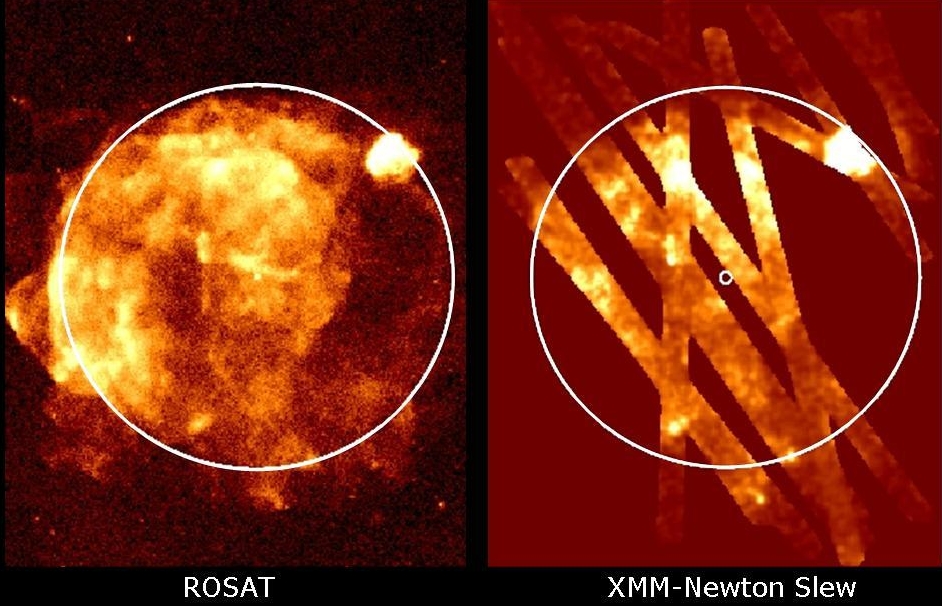
 Credit: Andy Read (University of Leicester), Max-Planck-Institut für extraterrestrische Physik and the ROSAT Mission and ESA
Credit: Andy Read (University of Leicester), Max-Planck-Institut für extraterrestrische Physik and the ROSAT Mission and ESA
Slew View
Sometimes getting there is half the fun, or half the science. Space observatories spend a significant amount of time moving from one target to the next. Since observing time is precious, observatories like XMM-Newton keep their detectors active and their eyes open - as long as the pathway's safe. The image above shows how such slew observations can provide important new data on astronomical objects of interest. On the left you see an X-ray observation of the Vela supernova remanant taken with a deep observation by the ROSAT satellite. On the right, strips of X-ray images obtained as XMM-Newton was moving from one target to the next. Even though the total time in the slew observation is only about 30 minutes, a large number of sources (about 2700 bright sources and about 2000 fainter sources) can be seen. A veritable treasure trove, and a freebee.
<
HEA Dictionary ● Archive
● Search HEAPOW
● Other Languages
● HEAPOW on Facebook
● Download all Images
● Education ● HEAD
>
Each week the HEASARC
brings you new, exciting and beautiful images from X-ray and Gamma ray
astronomy. Check back each week and be sure to check out the HEAPOW archive!
Page Author: Dr. Michael F. Corcoran
Last modified Monday, 26-Feb-2024 17:47:35 EST


